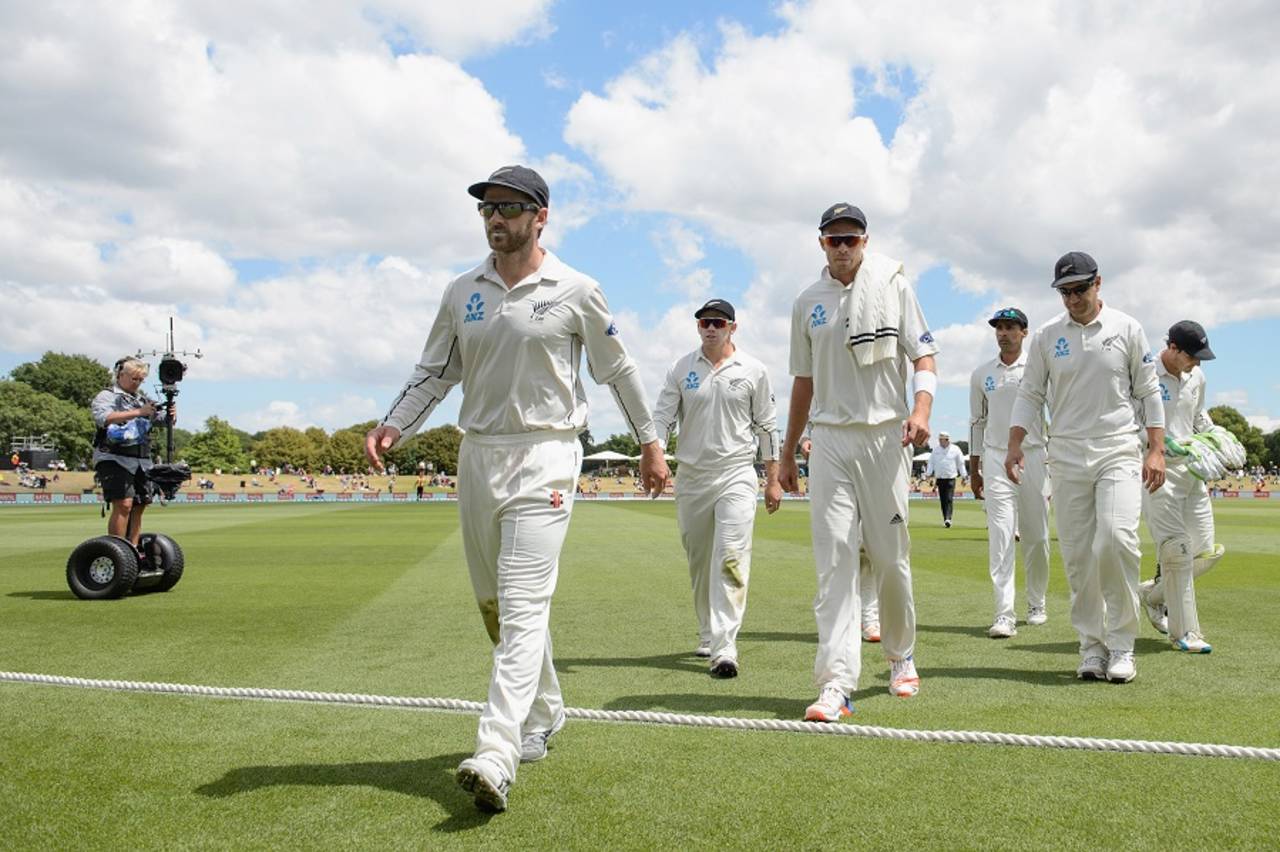Prepare for more two-Test series starting May 2019
A copy of the incoming FTP shows that 41 out of 81 Test series between May 2019 and May 2023 will be two-Test series
Osman Samiuddin
14-Dec-2017

Getty Images
How often have you been left frustrated by a great Test series that ended too soon, and without a decisive result because there was no third Test? Well, be prepared to get used to that feeling because at least half of all Test series in cricket's new calendar will likely consist of just two Tests.
A copy of the incoming Future Tours Programme (FTP) obtained by ESPNcricinfo shows that 41 out of 81 Test series between May 2019 and May 2023 will consist of just two Tests. For a number of countries the two-Test series will be the predominant type of bilateral contest.
The FTP is not final yet and could still be subject to change, but this is the model to have emerged from the latest scheduling workshop undertaken by members earlier this month in Singapore. It may yet undergo tweaks before it is presented to the ICC board in February, and voted on at the annual meeting next summer.

ESPNcricinfo Ltd
In one sense, the FTP will only be formalising a distinct modern-day trend. More and more Test nations have opted for two-Test series in recent years - New Zealand, as just one example, recently dropped one Test from their series hosting West Indies.
Still, there will be fewer two-Test series in the current FTP - from May 2014 to May 2019. If there is no further change to the existing FTP, there will have been 34 two-Test series by the cycle's end, though tellingly ten of those will be between now and May 2019, when members have in any case been keen to start replicating the format of the next FTP.
Indeed, the new Test league is essentially built on the two-Test format. Of the 57 Test series that constitute two cycles of the Test league in four years, near enough two-thirds (36) will be two-Test series.
The four-year calendar shows 81 Test series in all, meaning that there are 24 Test series outside the league structure. For the most part these will involve Afghanistan, Ireland and Zimbabwe, who are not part of the nine-team league. But they also include a number of one-off Tests (and five two-Test series) that countries within the league - such as Australia, England and Bangladesh - play against the three non-league sides.
New Zealand, Bangladesh, Sri Lanka and West Indies are the countries that play the most two-Test series. Ten out of Sri Lanka and Bangladesh's 12 Test commitments in the league are two-Test series (and for Bangladesh, a further three outside the league are scheduled to be two Tests). For West Indies that number is nine.
Meanwhile, 11 of New Zealand's 12 are two-Test series. "It's far more logical for us to play two-test and even one-test series, and certainly no more than three," NZC chairman Greg Barclay was quoted as saying by stuff.co.nz in October, just ahead of ICC meetings. "All the smaller Full Member countries won't get penalised for playing shorter series."
The biggest casualty in all this is the three-Test series, hitherto the cornerstone of the modern calendar. In the current FTP, there will have been 34 three-Test series in the five years to May 2019 - the same number as two-Test series. In the new four-year FTP, there will only be 14, less than half. .
There are 19 one-off Tests scheduled for now in the new FTP - almost three times as much as the current FTP - most of them involving the three non-league teams, Afghanistan, Ireland and Zimbabwe. None of these Tests will be part of the Test league. In addition, there are three four-Test series and four five-Test series, all played between the Big Three (India, Australia and England) and South Africa. In the current FTP there were 13 Test series of four or more Tests.
Osman Samiuddin is a senior editor at ESPNcricinfo